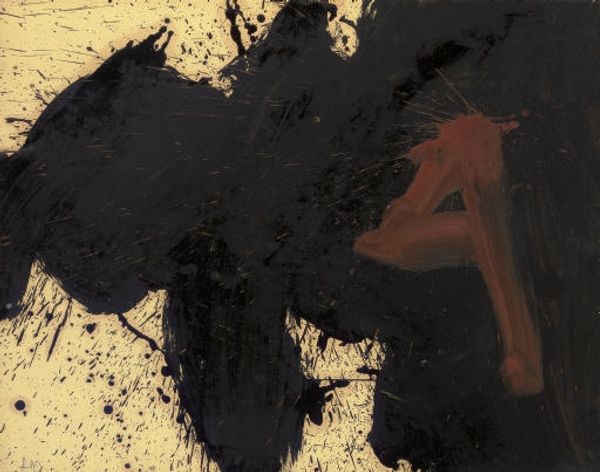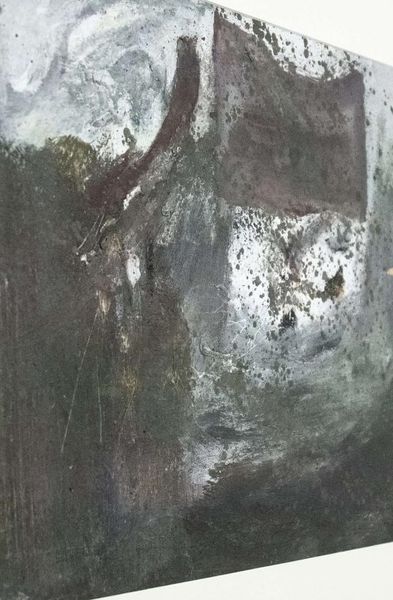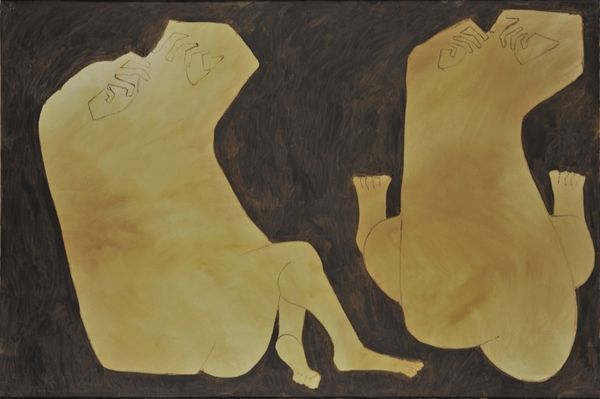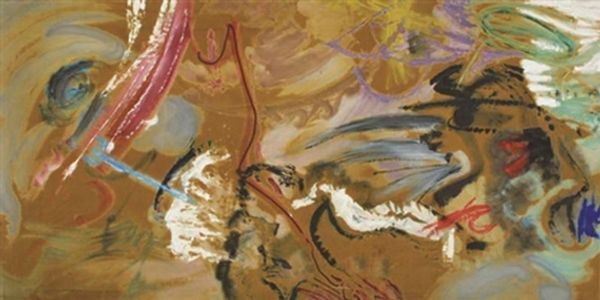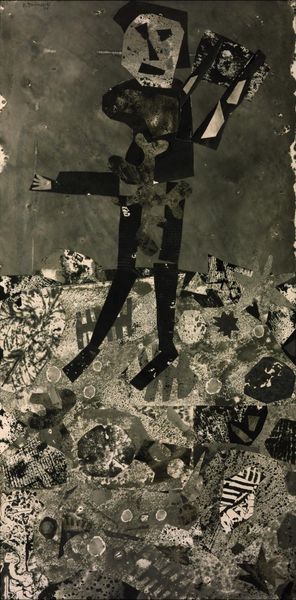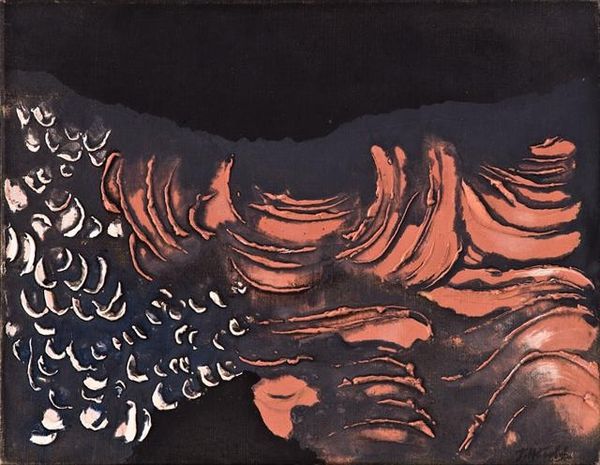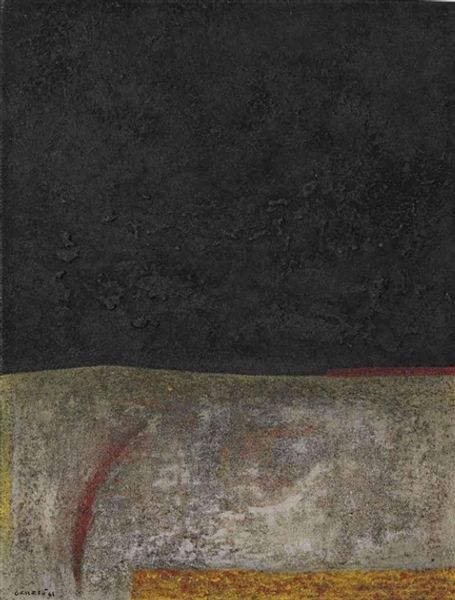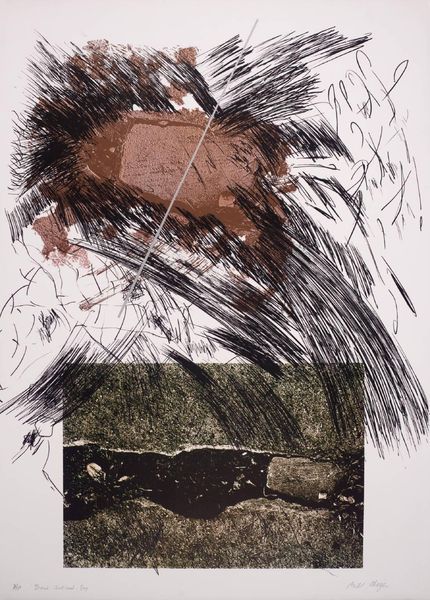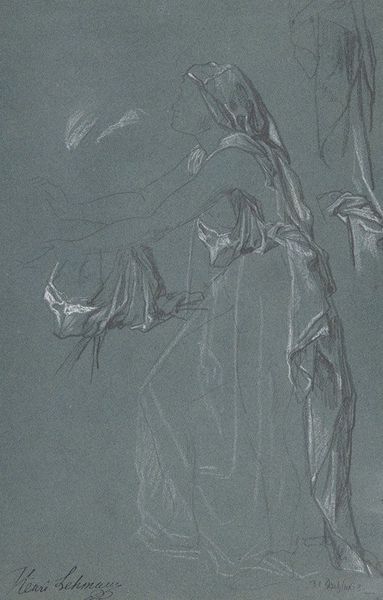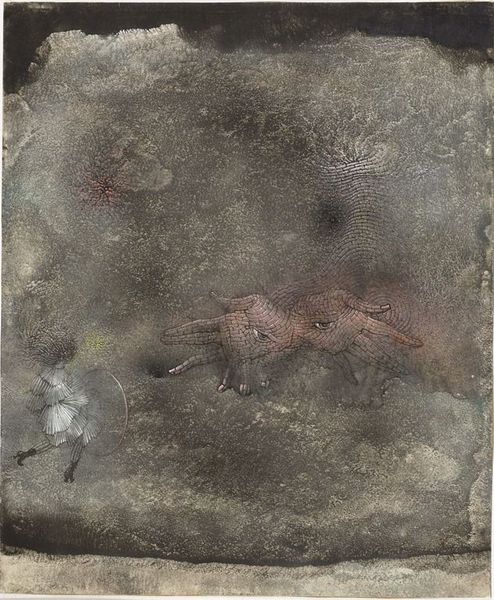
painting, oil-paint
#
gouache
#
symbol
#
painting
#
oil-paint
#
landscape
#
figuration
#
oil painting
#
symbolism
#
mixed media
Dimensions: 100 x 100 cm
Copyright: Public domain
Editor: Here we have Gustav Klimt's "The Golden Knight" from 1903, created with oil paint and gouache. There's something melancholic, yet powerful about it. What strikes you when you look at it? Curator: What resonates most with me is how this image reflects the socio-political tensions bubbling beneath the surface of early 20th-century Vienna. Look at this lone figure; encased in golden armor, yet dwarfed by the darkness. Do you think Klimt is portraying the strength, or perhaps, the fragility of tradition in the face of rapid modernization? Editor: Fragility, definitely. He looks almost like he's fading into the background. Curator: Exactly. Consider the context: the decline of the Austro-Hungarian empire, the rise of industrialization, and growing anxieties about identity. The Knight, a symbol of archaic power, appears almost spectral, as if he is haunted by the shadows of a changing world. How does the use of gold leaf contribute to this tension? Editor: I guess the gold makes him seem valuable, but also isolated? Like he doesn’t quite belong in the darker setting around him? Curator: Precisely! It sets him apart, emphasizing his otherness. This could also be a comment on the artist’s own position as a figure navigating shifting social landscapes. It’s through these contradictions – the allure of gold versus the somber landscape – that Klimt forces us to confront the complexities of his time. It almost makes one wonder, whose values does the artist seem to embrace? Editor: This has definitely changed how I see the painting. It's not just a pretty picture of a knight; it’s like a commentary on a society struggling with its identity. Curator: It's a reminder that art can hold up a mirror to society. Even through what appear to be gilded images, we can start to unearth deep, systemic unease.
Comments
No comments
Be the first to comment and join the conversation on the ultimate creative platform.
